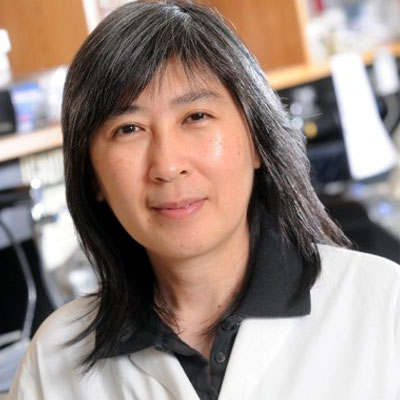Cytokine immunoregulatory strategy to target SLE autoreactive B cells
General Audience Summary
The harmful B cells in lupus develop from resting B cells that don’t release antibodies. Our goal is to prevent these resting cells from changing into destructive ones. We plan to test whether two immune system molecules that control B cells, interleukin-4 and interleukin-2, can stop the cells from becoming harmful. The first part of our study will test interleukin-4 and low doses of interleukin-2 on isolated cells from patients with lupus. If the two molecules prevent resting B cells from changing and curb antibody release, we will ask whether they are beneficial in mice with lupus. The next step, if results from those experiments are positive, could be clinical trials of interleukin-4 and low doses of interleukin-2 in patients with lupus.
What this study means for people with lupus
“The immune cells known as B cells release proteins called antibodies that lead to tissue damage in lupus. Using cells from patients and mice, we will ask whether two immune system molecules can reduce the numbers of harmful B cells and cut the amount of antibodies they release. If our study is successful, the two molecules could be tested as treatments in patients with lupus.”
Scientific Abstract
Our long-term objective is to develop innovative therapies for SLE that correct intrinsic defects in B cell responsiveness and, thus, have the capacity to both restore B cell homeostasis and downregulate the inflammatory response. The focus of this application is the development of a combination of interleukin-4 (IL-4) with low-dose IL-2 as a novel therapy for SLE. Preliminary data (i) confirm downregulation of the IL-4 receptor (IL-4R) on B cells from SLE patients; (ii) demonstrate that exposure of human B cells to IL-4 prior to treatment with low-dose IL-2 blocks the anti-Ig, IL-21, IFN-gamma, TLR7 and BAFF-stimulated development of T-bet+CD11c+IgD-CD27- double negative 2 (DN2) B cells and CD27+CD38+ plasmablasts (PBs) and preserves the B cells in the resting naïve (rNAV) state. In contrast, in the absence of IL-4, low-dose IL-2 treatment prevented development of PBs but not development of DN2 B cells; and (iii) suggest a hypothetical mechanism of action underlying the synergism between IL-4 and low-dose IL-2. Specifically, the IL-4R signaling pathways upregulate CD25 on B cells, thereby promoting formation of the high affinity IL-2R complexes required for low-dose IL-2 signaling that induces a regulatory signal that restores B cells to the rNAV stage. The P.I. will lead a team of experts to apply cutting-edge single-cell molecular analyses in the following Specific Aims:
AIM 1: Use of a recently introduced in vitro human B cell culture system to determine: (i) if IL-4+low-dose IL-2 is an effective strategy to restore B cell homeostasis, (ii) if IL-4 acts through pSTAT6 to induce CD25 to enable low-dose IL-2 to induce a regulatory signaling in suppressing pathogenic B-cell development in SLE. In parallel, associations of the molecular signatures of B cell subsets with demographic and clinical characteristic of the patients will be analyzed in a large cohort of SLE patients.
AIM 2: Use of an in vivo mouse model of lupus to determine: (i) If IL-4+low dose IL-2 can be developed into a safe and effective therapy for SLE; (ii) If induction of pSTAT6 and CD25 signaling are required to promote the protective effects of IL-4+low-dose IL-2; and (iii) If such protective effects are B-cell specific and independent of induction of regulatory T cells (Tregs).
The feasibility of the proposed therapy is supported by the clinical trials of IL-4 and low-dose IL-2 as monotherapies in SLE and other autoimmune diseases. Importantly, the proposed synergistic effects of IL-4+low-dose IL-2 on B cells extends the current understanding of the effects of low-dose IL-2 in promoting the development of Tregs. The detailed analyses of the key steps in the development of pathogenic B cells in SLE and the distribution of the associated molecular patterns among SLE patients will accelerate discovery of alternative therapeutic options that restore B cells into an inactive resting naïve status in this heterogeneous disease.




